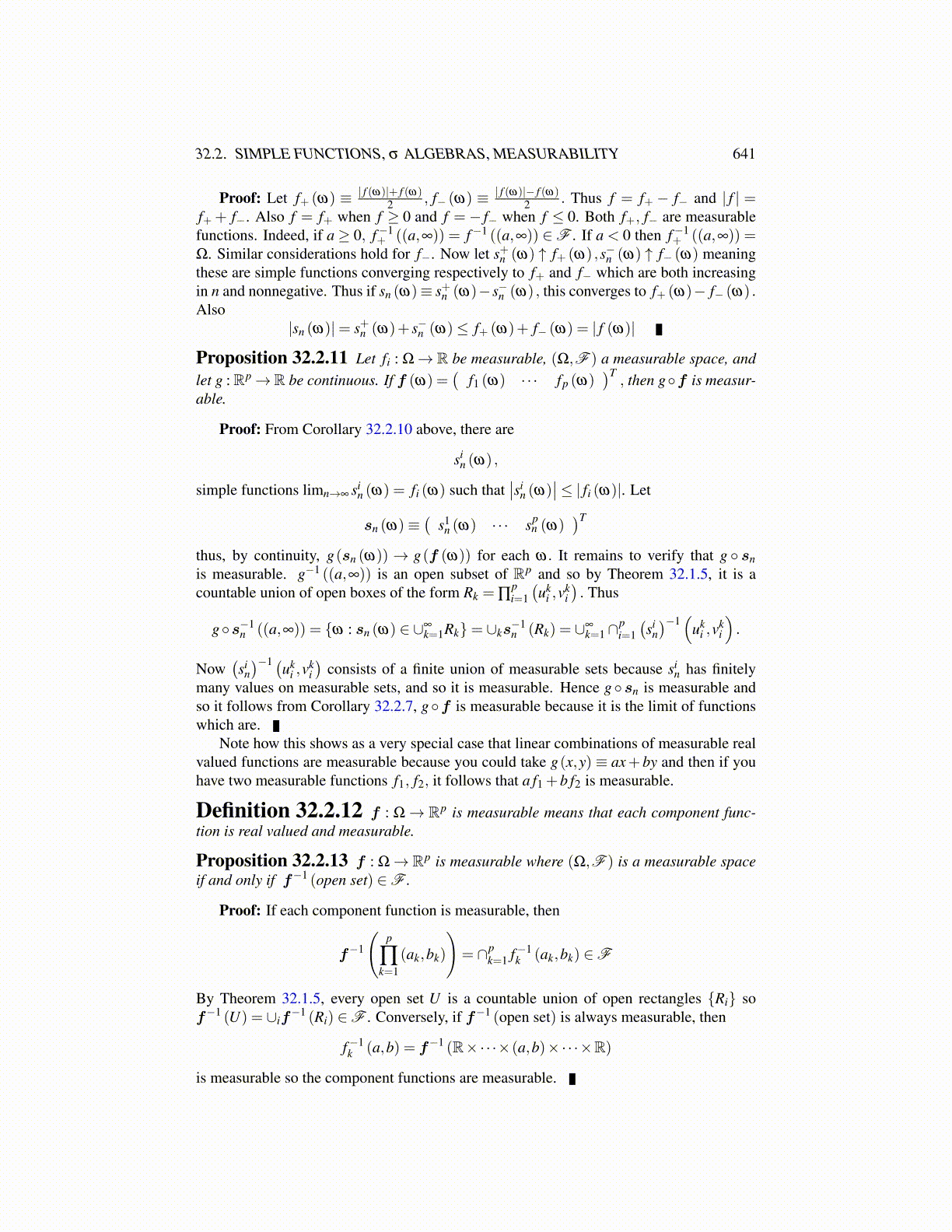
32.4. MEASURES FROM OUTER MEASURES 641
Since this holds for all n, you can take the limit as n → ∞ and conclude,
∞
∑i=1
µ(Ai) = µ(A)
which establishes 32.6.Consider part 32.7. Without loss of generality µ (Fk) < ∞ for all k since otherwise
there is nothing to show. Suppose {Fk} is an increasing sequence of sets of S . Thenletting F0 ≡ /0, {Fk+1 \Fk}∞
k=0 is a sequence of disjoint sets of S since it was shown abovethat the difference of two sets of S is in S . Also note that from 32.9
µ (Fk+1 \Fk)+µ (Fk) = µ (Fk+1)
and so if µ (Fk)< ∞, then
µ (Fk+1 \Fk) = µ (Fk+1)−µ (Fk) .
Therefore, lettingF ≡ ∪∞
k=1Fk
which also equals∪∞
k=1 (Fk+1 \Fk) ,
it follows from part 32.6 just shown that
µ (F) =∞
∑k=0
µ (Fk+1 \Fk) = limn→∞
n
∑k=0
µ (Fk+1 \Fk)
= limn→∞
n
∑k=0
µ (Fk+1)−µ (Fk) = limn→∞
µ (Fn+1) .
In order to establish 32.8, let the Fn be as given there. Then, since (F1 \Fn) increases to(F1 \F), 32.7 implies
limn→∞
(µ (F1)−µ (Fn)) = µ (F1 \F) .
The problem is, I don’t know F ∈ S and so it is not clear that µ (F1 \F) = µ (F1)−µ (F).However, µ (F1 \F)+µ (F)≥ µ (F1) and so µ (F1 \F)≥ µ (F1)−µ (F). Hence
limn→∞
(µ (F1)−µ (Fn)) = µ (F1 \F)≥ µ (F1)−µ (F)
which implieslimn→∞
µ (Fn)≤ µ (F) .
But since F ⊆ Fn,µ (F)≤ lim
n→∞µ (Fn)
and this establishes 32.8. Note that it was assumed µ (F1) < ∞ because µ (F1) was sub-tracted from both sides.
It remains to show S is closed under countable unions. Recall that if A ∈ S , thenAC ∈ S and S is closed under finite unions. Let Ai ∈ S , A = ∪∞
i=1Ai, Bn = ∪ni=1Ai. Then
µ(S) = µ(S∩Bn)+µ(S\Bn) (32.10)= (µ⌊S)(Bn)+(µ⌊S)(BC
n ).